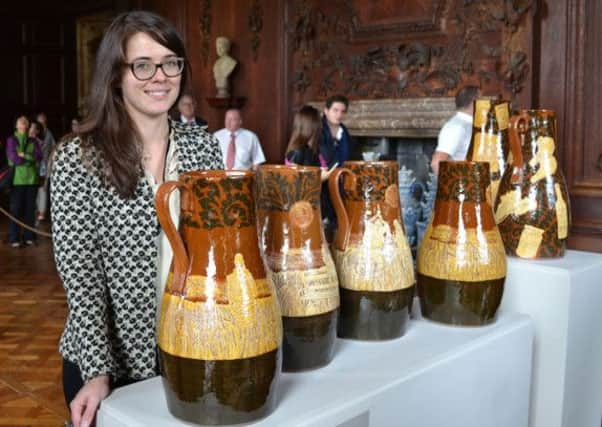How six jugs link Chatsworth with a Sheffield council estate


On the surface, the grandeur of Chatsworth house and gardens may seem to have little in common with Sheffield’s biggest council estate, but a new set of artwork is shining light on the historic links between the two.
Ceramic specialist Emilie Taylor has spent the past year exploring the connection between one of the home of the Duke and Duchess of Devonshire with Manor Lodge, a Tudor relic in the heart of the inner-city neighbourhood which ranks among the most-deprived in England, The pair are linked by Bess of Hardwick who persuaded her husband Sir William to buy Chatsworth and re-locate from a medieval hunting lodge in Sheffield in 1549.
Advertisement
Hide AdAdvertisement
Hide AdIt was a link oft overlooked when Emilie embarked on her year-long residency, which began with a trip to Denmark to learn the art of wood-firing, which allowed her to use a specially-built kiln back at Manor Lodge, now run by social enterprise the Green Estate.
The result is a set of six ceramic harvest jugs, taking inspiration from the ancient Greek deities on the painted ceilings of Chatsworth, particularly Verrrio’s ‘Return to the Forgotten Golden Age’ and giving them a 21st Century twist.
Sheffield-based Miss Taylor, whose grandmother grew up in Manor, said: “As I moved between the two estates I was struck by this idea of the golden age.
“Chatsworth has this overwhelming amount of stuff yet we are living in the age of austerity. It is interesting to see how separate things have become.
Advertisement
Hide AdAdvertisement
Hide Ad“It’s not about being combative but just bringing those worlds together again. The gold lustre of the past and the iron oxide of the present sit side by side on my pots.”
The 34-year-old says her experience of working with young people of the Manor was a world away from the area once described as the ‘worst estate in Britain’ by Roy Hattersley in the nineties. Members of Park Youth Club helped to create a large clay vessel, the sides of which are decorated with images of the young people recreating the poses of the gods and goddesses of the Chatsworth ceiling, etched with the words ‘believe in other people’.
The Duke of Devonshire said: “Despite the differences between the estates, at heart they share the same values; community, a link between place and those who inhabit it, access to beauty, and the use and reuse of local resources.”
“Today the Manor is known as much for being a place of positive actions and a destination site without stigma, as it was as a seriously failing neighbourhood and a no go area,” added Sue France, chief executive of Green Estates.
Advertisement
Hide AdAdvertisement
Hide AdMiss Taylor hopes the work will pay tribute to the strong women who helped to inspire it, particularly Deborah, Dowager Duchess of Devonshire, who passed away earlier this month.
“The strength of women in driving these estates interested me a lot. Bess of Hardwick had such a powerful impact and the Dowager Duchess made Chatsworth what it is today,” she said.
The Hymn to Persephone exhibition is on display in Chatsworth house until November 7, after which harvest jugs will be brought to the Manor to be exhibited locally.